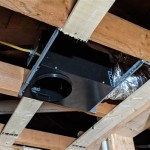How Much To Remove Bathroom Floor Tile
Removing bathroom floor tile is a common task in bathroom renovations. Whether updating an outdated style or addressing damage, understanding the costs involved is crucial for effective budgeting. Several factors influence the overall expense, including the bathroom size, tile type, and removal method.
The primary cost driver is labor. Professional tile removal services typically charge by the square foot. This cost can range from $2 to $7 per square foot, depending on the complexity of the removal. Factors contributing to complexity include the type of tile, the presence of multiple layers, and the substrate material underneath the tile.
Tile type significantly impacts removal difficulty. Small mosaic tiles, for example, can be more time-consuming to remove than larger format tiles, potentially increasing labor costs. Similarly, certain tile materials like porcelain are denser and more resistant to breakage, requiring specialized tools and potentially increasing the removal time and cost.
Multiple layers of tile add another layer of complexity. If the existing tile was installed over a previous layer, removal requires more time and effort. This is because each layer must be removed individually, often requiring different techniques and tools for each layer. The added labor translates directly into higher removal costs.
The underlying substrate material, whether concrete or wood subfloor, also plays a role in the removal process. Concrete substrates typically require more robust tools and potentially jackhammers, increasing both the labor and equipment costs. Wood subfloors, while generally easier to work with, require caution to avoid damage, which can influence labor time.
Beyond labor costs, disposal fees contribute to the overall expense. Construction debris, including removed tiles and substrate materials, must be disposed of properly. Disposal fees vary by location and volume, ranging from $20 to $50 per cubic yard. Renting a dumpster, a practical option for larger renovations, can cost between $200 and $500 per week, depending on the dumpster size.
In certain situations, asbestos testing may be necessary. Homes built before the 1980s might contain asbestos in the tile adhesive or underlying materials. Asbestos testing is crucial for safety and involves hiring a certified asbestos abatement professional. Testing costs can vary, averaging between $200 and $500, and abatement, if necessary, can add significant expense, typically ranging from $10 to $20 per square foot.
For homeowners opting for DIY removal, material costs must be considered. Essential tools for tile removal include a hammer, chisel, pry bar, safety glasses, dust mask, and potentially a demolition hammer for larger projects or tougher tiles. Renting a demolition hammer can cost between $50 and $100 per day. Purchasing these tools represents an upfront investment, while renting offers a more cost-effective option for one-time projects.
The condition of the subfloor after tile removal influences subsequent renovation costs. If the subfloor is damaged during removal, repairs or replacement will be necessary. Repairing a subfloor can range from $5 to $15 per square foot, while a full replacement can cost significantly more, depending on the subfloor material and the extent of the damage.
Accessibility also plays a role in overall cost. Bathrooms located on upper floors or in areas with limited access can present logistical challenges, potentially impacting labor time and increasing costs. Difficult access might necessitate specialized equipment or additional manpower for transporting materials.
Geographic location influences labor rates and disposal fees. Areas with higher labor costs generally see higher tile removal prices. Similarly, disposal regulations and fees differ by region, impacting the overall project budget. Researching local costs provides a more accurate estimate for specific projects.
Obtaining multiple quotes from reputable contractors is recommended when planning a bathroom tile removal project. Detailed quotes should itemize labor costs, disposal fees, and any potential additional expenses, allowing for a comprehensive comparison and informed decision-making. Clear communication with contractors about the project scope and any specific requirements ensures accurate cost estimations.
Finally, considering the potential for unforeseen issues is crucial. Unexpected complications, such as hidden damage to the subfloor or the discovery of asbestos, can add to the overall cost. Including a contingency buffer in the budget helps accommodate these unforeseen expenses and ensures the project stays on track financially.

How Much Does It Cost To Remove A Tile Floor Homeserve Usa

Costs To Remove Floor Tiles A Complete Guide

How To Remove A Tile Floor

How Much Does It Cost To Remove A Tile Floor Homeserve Usa

How Much Does It Cost To Remove A Tile Floor Homeserve Usa

How To Remove Bathroom Tile Steps Prep Considerations

How Much Does It Cost To Demo A Bathroom In 2024

How To Remove A Tile Floor

How To Remove Ceramic Tile And Thinset The Nifty Nester

Average Bathroom Tile Installation And Retiling Cost Forbes Home
Related Posts







